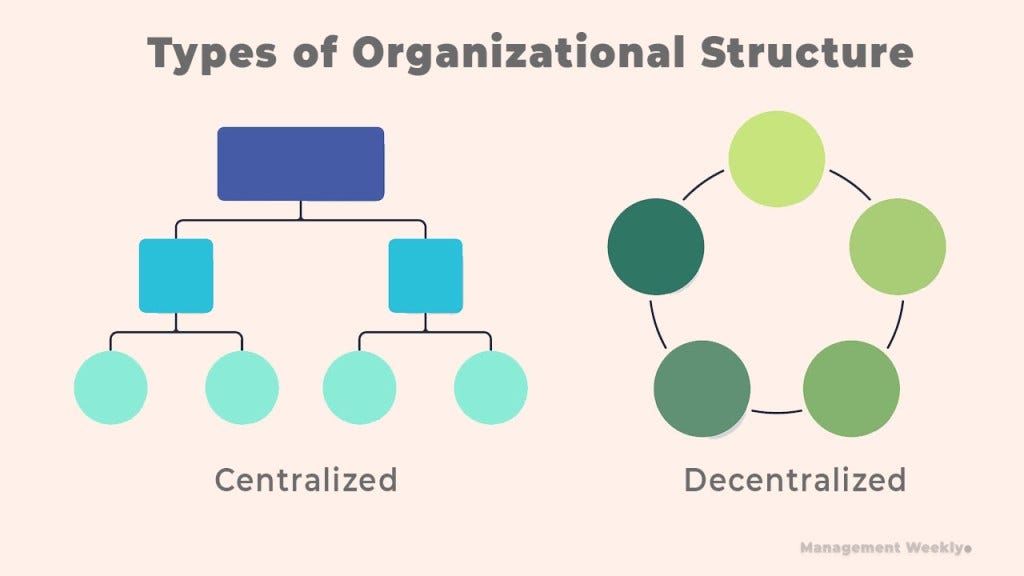Serial Acquirers
Growth via acquisitions
Something that I’ve noticed over the past few months is that I’ve unintentionally been drawn to companies that have a history of buying up the industries they occupy, slowly but surely. I have not intentionally set out to find these types of businesses but it happened nonetheless. I think a lot can be learned from studying these types of businesses and their success or from what has given them grief. What are they? It seems they have a name - serial acquirers.
It also struck me (over the head with a hammer) that if you are able to identify these early enough, you can get tremendous returns. Some of these have been 100 baggers already and others are well on their way! At the very end of this you can find a list of serial acquirers that I managed to string together.
Not all serial acquirers operate the same way. One way I’ve seen them divided up is by three or four broad categories. I’ll stick to three to simplify the definitions.
Roll-ups - these tend to be simple businesses in fragmented industries and require some integration in order to gain the value from the “synergies”. These types are typically more difficult to be successful investments but can be great when they do work. Boyd, Waste Management, GLF and Dentalcorp are examples.
Platforms - these tend to be businesses in the same or adjacent industries and require minimal integration. They work best when there is a fragmented or growing industry or sector and when they can be grouped together to share best practices but remain independent. They can sometimes leverage customer bases or add to product offerings/bundling of products or services but do not require significant integration that roll ups need as they are valuable and profitable as stand-alone entities. Heico, Constellation, Transdigm are all successful examples of platforms.
Holding Company - these are somewhat well known as businesses that act to diversify and own full or partial interests in a wide variety of industries and sectors. They do not tend to try to integrate at all and tend to rely fully on the capital allocation skills of the management team deploying capital. While these can be very successful, they are not really the focus of this writing. Examples include Berkshire Hathaway, IAC, Markel, Fairfax Financial Holdings.
Now that we’ve got some kind of framework for what we are talking about, let’s take a look into what are some common attributes of successful models with some serial acquirers.
Patient and Fair Valuation for Targets
Having a management team that is committed to not overpaying will go a long way. It may seem obvious but in some cases people have a hard time being patient with cash and will chase deals. Businesses that have done many deals have the benefit of experience and have seen the good and the bad (and the ugly). That being said, quality is likely just as important when making purchases.
It’s far better to buy a wonderful company at a fair price than a fair company at a wonderful price.
- Warren E. Buffett
Just like any valuation framework, quality needs to be considered and should be the primary concern. What is the point of purchasing a poor quality business just because its cheap?
Cash Flow is KING
The ability to buy strong cash flowing businesses is a must. Capital light businesses tend to leave cash available to redeploy into new purchases. Given that the strategy is continued growth via acquisitions, it makes good sense to avoid businesses that don’t leave capital left over to deploy elsewhere. Capital can certainly be redeployed into the same business if there is a good return for growth but if the business just needs regular doses of capital to be maintained, the decision shouldn’t be taken lightly. Software and other service business models are generally good models for this type of business as it doesn’t require the capital of heavy industries like railroads, pipelines and utilities.
The Lure of Synergies
Many times management teams will fall in love with synergies that theoretically exist with two or more businesses. In reality, a lot of these synergies either don’t exist or will be very long and painful to successfully realize through integration. These synergies are often quoted mathematically as a justification to pay a high price. This often ends poorly for the acquirer.
There are probably examples where if the purchase is small enough, integrating and realizing these savings is somewhat realistic but in those cases, the synergies quoted don’t move the needle much for valuation due to the small scale of the purchase and are rightly not pursued. This trap has been studied many times and yet management teams still fall for it (possibly due to poor incentives and short term thinking).
Go Sideways
Horizontal acquisitions as opposed to vertical tend to be easier. An example of horizontal tends to be a competitor in the same industry. This is why a fragmented industry is helpful because it allows this behavior of buying up competition without antitrust concerns (and presents more frequent opportunities). Horizontal is easier because the parent company already knows the business very well and generally understands the market and customer needs. It also understands the financials, costs and unit economics so should be better at determining a reasonable valuation. Vertical acquisitions are buying businesses up or down the value chain within the same or related industry. The value in these acquisitions are more complicated to unlock because they often rely on integrating the operations into the parent companies other operations and they can be new types of operations for the parent. The acquirer could simply lack the expertise leading to operational or strategic errors or simply overpaying on the purchase. In either case there are many pitfalls for vertical acquisitions that have outcomes that can easily destroy shareholder value.
Being A Good Partner
Having a pristine reputation as a quality home for businesses that are looking for a safe and reliable permanent home is an advantage that no reasonable amount of financing can compete with. For founders looking to sell their businesses, these things are more than a job. These are their legacies, their personal reputations and the livelihoods of the people who made the business what it is.
How to find a good spouse? … the best single way is to deserve a good spouse.
- Charles T. Munger
Selling to some private equity fund or some other potential vulture looking for a quick buck or someone known to squeeze a business for profit is often not what these founders will be looking for.
Decentralized Structure
Allowing the operating business to do what they do best. This one goes hand in hand with being a good partner and with avoiding too much synergies. While there have been some examples of successes where integration to a point has been helpful, it is generally more difficult and questionable whether this actually benefited shareholders in some cases.
The idea of pushing decisions down closer to where they are executed has been studied many times and proven to be a good structure for decision making in organizations. Larger organizations tend to have trouble with this but if structured and executed well, it can scale and have benefits long term.
100 Duck Sized Horses
Many small acquisitions seems to be better than a few big ones. I suspect there’s a few reasons why this tends be the case. Smaller businesses attract fewer competitors to be bought out and tend to have more reasonable valuations more often. There’s often a desire to make bigger purchases if you are a bigger company, especially if management is incentivized to make moves to significantly increase overall revenues or some other metric not aligned with long term shareholder value.
Choose the Right Industry
Operate in industries that support acquisitions and have a large and hopefully growing market. What you would want to avoid is a market where there’s only a few big players. In this case they may be unable to do acquisitions in the industry they are in and they may sway far from what they know or face regulatory scrutiny for antitrust concerns.
A fragmented industry such as software, healthcare, dentistry, construction services, technology, financial services will allow lots of runway for continued growth for years. Coupled with high quality and small businesses that are great profitable and have good consistent and predictable business models are good candidates. Remember, you likely want to avoid industries that are capital intensive and that are either cyclical or overly reliant on the boom cycles of the broader economy. Generally, you likely want to avoid products and services which are overly price sensitive and where there is too much competition. Boring, repetitive businesses are likely best. Ideally, niche businesses where the price is not a significant part of the overall cost to the end user’s goals allows good pricing power and a high quality and high margin business.
Aligned Incentives and Goals
Management that are aligned with long term shareholders is what you are looking for here. At the end of the day, it’s the management team that is making these purchase decisions and you want them to be thinking like you. You want good capital allocation (they are reinvesting your returns on your behalf). What you don’t want is someone who is incentivized to burn your cash or to take unreasonable financial risks such as loading up on leverage with bad terms or to invest in a low return business for the sake of short term bonuses or short term targets.
Call it what you will, incentives are what get people to work harder.
- Nikita Khrushchev
It helps to have a management team with significant stake in the company and who buy shares primarily with their own money. An owner-operator and/or founder is generally a good sign as they tend to have the long term success in mind and a vested interest in avoiding demise.
A List of Serial Acquirers
Here, I’ve managed to put together an incomplete list of some serial acquirers that are publicly traded (in no particular order).
DHR - Danaher
WSO - Watsco
HEI - Heico
ROP - Roper
HLMA - Halma
OTEX - Opentext
CSU - Constellation Software
TOI - Topicus
SRT3 - Sartorius AG
MIDD - Middleby
SD! - SDI group PLC
TDG - Transdigm
VOLO - Volati
ADTT - Addtech
WM - Waste Management
GFL - GFL Environmental
DNTL - Dentalcorp
BRO - Brown and Brown
BYD - Boyd Group
References
Some extra material that I’d recommend reading on the topic that I used to research this area is listed below:
http://andvariassociates.com/a-quick-study-of-serial-acquirers
https://www.woodlockhousefamilycapital.com/post/how-they-did-it-a-uk-100-bagger
http://sabercapitalmgt.com/importance-of-roic-reinvestment-vs-legacy-moats/
https://smallcapdiscoveries.com/the-art-of-the-roll-up/
https://scottlp.com/letters.html#Acquirers
https://www.sectorinsight.com/serial-acquirers
https://issuu.com/reqcapital/docs/investing-with-insight
I hope you enjoyed the read on serial acquirers. If you did, I always appreciate any questions or comments as well as a share or recommendation to your friends and colleagues. You can also follow me on twitter for more @MoS_Investing
Cheers!
Simon






Missing Park Ohio, Steel Partners, Crawford United